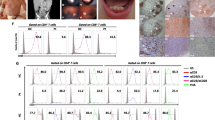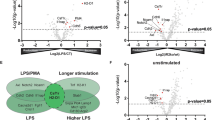Abstract
Two members of the TULA family (TULA/STS-2/UBASH3A and TULA-2/STS-1/UBASH3B) recently emerged as novel regulators of several cellular functions. The degree of structural similarity between the TULA-family proteins is typical for proteins that belong to the same family. Furthermore, the experiments with knockout mice lacking these proteins may be interpreted as suggesting that functions of TULA-family proteins in T lymphocytes overlap. At the same time, TULA and TULA-2 exhibit clear functional dissimilarities, starting with the finding that a conserved phosphatase domain present in both proteins exhibits remarkable differences in enzymatic activity; TULA-2 is an active phosphatase capable of dephosphorylating multiple tyrosine-phosphorylated proteins, whereas the phosphatase activity of TULA is extremely low. In contrast, TULA, but not TULA-2, facilitates growth factor withdrawal-induced apoptosis in T cells. In spite of their apparent importance, the functional role of TULA-family proteins is not well understood. In particular, the role of functional dissimilarities between them remains unclear.

Similar content being viewed by others
References
Wattenhofer M, Shibuya K, Kudoh J, Lyle R, Michaud J, Rossier C, Kawasaki K, Asakawa S, Minoshima S, Berry A, Bonne-Tamir B, Shimizu N, Antonarakis SE, Scott HS (2001) Isolation and characterization of the UBASH3A gene on 21q22.3 encoding a potential nuclear protein with a novel combination of domains. Hum Genet 108:140–147
Swaminathan G, Tsygankov AY (2006) The Cbl family proteins: ring leaders in regulation of cell signaling. J Cell Physiol 209:21–43
Tsygankov A (2008) Cbl-family proteins as molecular adaptors. In: Tsygankov A (ed) Cbl proteins. Nova Science Publishers, New York
Nau MM, Lipkowitz S (2008) Welcome to the family. In: Tsygankov A (ed) Cbl proteins. Nova Science Publishers, New York
Feshchenko EA, Smirnova EV, Swaminathan G, Teckchandani AM, Agrawal R, Band H, Zhang X, Annan RS, Carr SA, Tsygankov AY (2004) TULA: an SH3- and UBA-containing protein that binds to c-Cbl and ubiquitin. Oncogene 23:4690–4706
Carpino N, Kobayashi R, Zang H, Takahashi Y, Jou ST, Feng J, Nakajima H, Ihle JN (2002) Identification, cDNA cloning, and targeted deletion of p70, a novel, ubiquitously expressed SH3 domain-containing protein. Mol Cell Biol 22:7491–7500
Carpino N, Turner S, Mekala D, Takahashi Y, Zang H, Geiger TL, Doherty P, Ihle JN (2004) Regulation of ZAP-70 activation and TCR signaling by two related proteins, Sts-1 and Sts-2. Immunity 20:37–46
Kowanetz K, Crosetto N, Haglund K, Schmidt MH, Heldin CH, Dikic I (2004) Suppressors of T-cell receptor signaling Sts-1 and Sts-2 bind to Cbl and inhibit endocytosis of receptor tyrosine kinases. J Biol Chem 279:32786–32795
Rigden DJ (2008) The histidine phosphatase superfamily: structure and function. Biochem J 409:333–348
Mikhailik A, Ford B, Keller J, Chen Y, Nassar N, Carpino N (2007) A phosphatase activity of Sts-1 contributes to the suppression of TCR signaling. Mol Cell 27:486–497
Chen Y, Jakoncic J, Carpino N, Nassar N (2009) Structural and functional characterization of the 2H-phosphatase domain of Sts-2 reveals an acid-dependent phosphatase activity. Biochemistry. (Epub ahead of print)
Smirnova EV, Collingwood TS, Bisbal C, Tsygankova OM, Bogush M, Meinkoth JL, Henderson EE, Annan RS, Tsygankov AY (2008) TULA proteins bind to ABCE-1, a host factor of HIV-1 assembly, and inhibit HIV-1 biogenesis in a UBA-dependent fashion. Virology 372:10–23
Collingwood TS, Smirnova EV, Bogush M, Carpino N, Annan RS, Tsygankov AY (2007) T-cell ubiquitin ligand affects cell death through a functional interaction with apoptosis-inducing factor, a key factor of caspase-independent apoptosis. J Biol Chem 282:30920–30928
Raguz J, Wagner S, Dikic I, Hoeller D (2007) Suppressor of T-cell receptor signalling 1 and 2 differentially regulate endocytosis and signalling of receptor tyrosine kinases. FEBS Lett 581:4767–4772
Agrawal R, Carpino N, Tsygankov A (2008) TULA proteins regulate activity of the protein tyrosine kinase Syk. J Cell Biochem 104:953–964
Davies L, Anderson IP, Turner PC, Shirras AD, Rees HH, Rigden DJ (2007) An unsuspected ecdysteroid/steroid phosphatase activity in the key T-cell regulator, Sts-1: surprising relationship to insect ecdysteroid phosphate phosphatase. Proteins 67:720–731
Chen Y, Jakoncic J, Wang J, Zheng X, Carpino N, Nassar N (2008) Structural and functional characterization of the C-terminal domain of the ecdysteroid phosphate phosphatase from bombyx mori reveals a new enzymatic activity. Biochemistry 47:12135–12145
Opferman JT, Korsmeyer SJ (2003) Apoptosis in the development and maintenance of the immune system. Nat Immunol 4:410–415
Strasser A, Pellegrini M (2004) T-lymphocyte death during shutdown of an immune response. Trends Immunol 25:610–615
Pandiyan P, Zheng L, Ishihara S, Reed J, Lenardo MJ (2007) CD4+ CD25+ Foxp3+ regulatory T cells induce cytokine deprivation-mediated apoptosis of effector CD4+ T cells. Nat Immunol 8:1353–1362
Tsygankov A (2008) Multi-domain STS/TULA protein are novel cellular regulators. IUBMB Life 60:224–231
Acknowledgment
I would like to express my deepest gratitude to Nick Carpino for insightful discussions.
Author information
Authors and Affiliations
Corresponding author
Rights and permissions
About this article
Cite this article
Tsygankov, A.Y. TULA-family proteins: an odd couple. Cell. Mol. Life Sci. 66, 2949–2952 (2009). https://doi.org/10.1007/s00018-009-0071-x
Received:
Revised:
Accepted:
Published:
Issue Date:
DOI: https://doi.org/10.1007/s00018-009-0071-x




